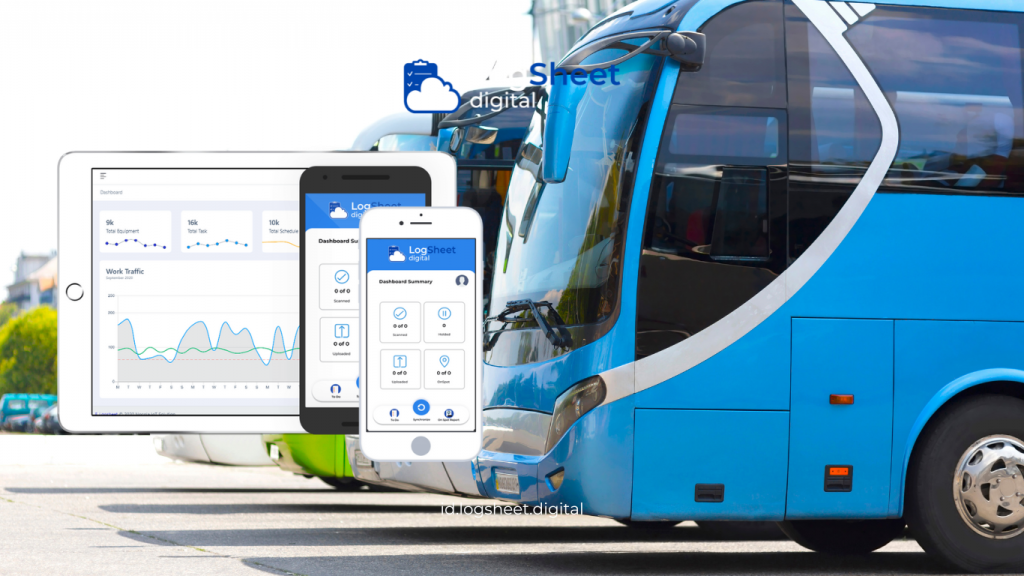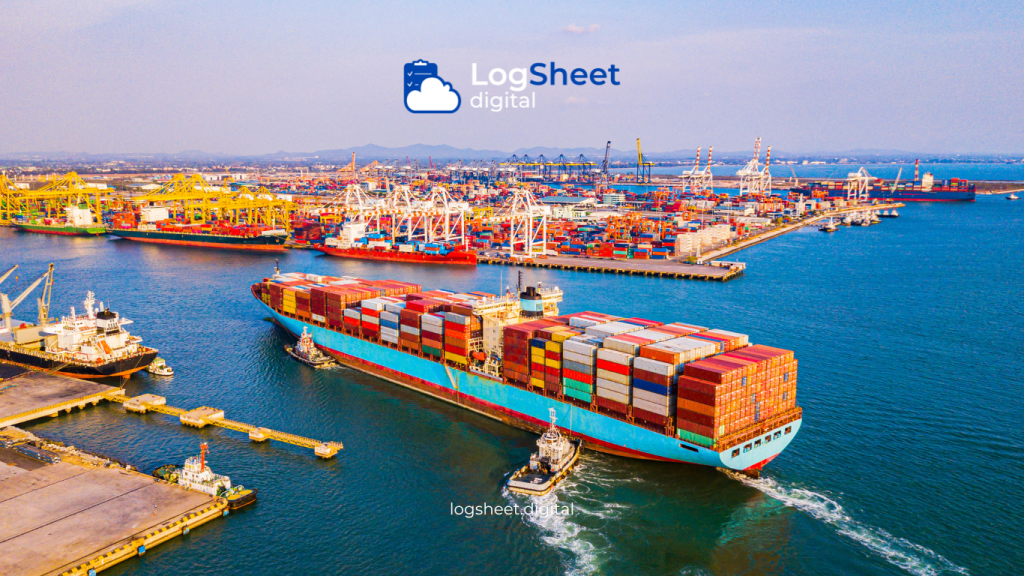Logistics fleet management is a crucial aspect in maintaining the efficiency and reliability of the supply chain. However, manual recording methods often present challenges, such as inaccurate data, slow tracking processes, and difficulty in evaluating fleet performance. With technological advancements, the implementation of digital logsheets becomes a solution to optimize logistics fleet management. This article will discuss the benefits, challenges, and steps for implementing digital logsheets in this sector.
What is a Digital Logsheet?

Read More: Safety Equipment Monitoring: Why Is It Important?
Definition of Digital Logsheet
A digital logsheet is a technology-based system that replaces manual recording methods. By using applications or software, digital logsheets automatically and in real-time record fleet operational data, such as fuel usage, travel routes, and maintenance schedules.
Main Functions of Digital Logsheet
- Automatic Recording: Fleet travel and activity data are recorded digitally.
- Real-Time Tracking: Allows for the live tracking of fleet positions.
- System Integration: Can be connected with GPS devices and ERP systems for more integrated management.
Why is a Digital Logsheet Important for Logistics Fleet Management?

Read More: Data Security in Digital Logsheet: Challenges and Security Strategies
Operational Efficiency
A digital logsheet helps accelerate the recording and analysis of fleet data, reducing the time and effort needed compared to manual methods.
Data Accuracy
Human errors in manual recording often affect operational decisions. Digital logsheets ensure the recorded data is more accurate and reliable.
Fleet Performance Monitoring
With a digital logsheet, fleet managers can evaluate vehicle performance in real-time, such as fuel consumption, service schedules, and travel times.
Process Transparency
All fleet activities are well-documented, enabling easier audits and analysis.
Benefits of Digital Logsheet in Fleet Management

Read More: Digital Logsheet: Transparency and Warehouse Security
1. Real-Time Fleet Monitoring
A digital logsheet allows companies to track vehicle positions, delivery times, and routes taken in real-time, reducing the risk of delays or route deviations.
2. Vehicle Maintenance Efficiency
The system helps remind vehicle maintenance schedules based on time or mileage, reducing the risk of sudden breakdowns.
3. Fuel Consumption Optimization
Fuel consumption data can be analyzed to determine usage efficiency and minimize waste.
4. Increased Customer Satisfaction
With a digital logsheet, companies can provide customers with accurate information about delivery status, increasing customer trust and satisfaction.
5. Operational Cost Reduction
Automation and better data analysis help companies reduce operational costs, such as fuel expenditure and vehicle repair costs.
Challenges in Implementing Digital Logsheet

Read More: The Advantages of Digital Logsheet in Equipment Safety
1. Implementation Costs
The initial cost for software, hardware, and employee training can be a challenge, especially for small and medium-sized companies.
2. Technology Readiness
Some companies may not have the adequate technological infrastructure to support the digital logsheet system.
3. Employee Training
Employees accustomed to manual methods need to be trained to effectively use the new system.
4. Data Security Risks
Like other digital technologies, digital logsheets are vulnerable to cyber threats if not equipped with adequate security systems.
Steps to Implement Digital Logsheet

Read More: Logistics Management System with Digital Logsheet
1. Identify Operational Needs
Analyze the specific needs of your logistics fleet, such as the number of vehicles, types of data needed, and features desired in the digital logsheet system.
2. Choose the Right Platform
Find digital logsheet software that fits the company’s needs, has comprehensive features, and is user-friendly.
3. Integration with Other Systems
Ensure the digital logsheet can integrate with other systems, such as ERP or GPS devices, to enhance efficiency.
4. Conduct a Trial Run
Test the system on a portion of the fleet before rolling it out fully to ensure the system works as expected.
5. Provide Employee Training
Offer intensive training to drivers and related staff to ensure they understand how to use the digital logsheet.
6. Monitor and Evaluate
Monitor the digital logsheet implementation regularly to ensure the system is operating smoothly and delivering the desired results.
Case Study: Success in Implementing Digital Logsheet

Read More: Effectiveness of Digital Logsheet in Calibration Defect Reduction
PT Logistik Nusantara
PT Logistik Nusantara is a logistics company that previously faced issues with late deliveries and high operational costs. After implementing a digital logsheet, the company achieved the following:
- Reduced operational costs by up to 25% through optimized routing and fuel management.
- Increased on-time delivery accuracy from 85% to 98%.
- Gained more accurate vehicle performance data, aiding in maintenance planning.
Tips for Maximizing the Use of Digital Logsheet

Read More: Data Security in Digital Logsheet: Challenges & Strategies
1. Ensure the System is Always Updated
Use software that is regularly updated to ensure optimal performance and system security.
2. Utilize Data for Analysis
Use the data generated by the digital logsheet to conduct fleet performance analysis and make data-driven decisions.
3. Involve All Stakeholders
Involving the entire team, including drivers and managers, in the digital logsheet implementation process will ensure its success.
4. Regular Evaluation
Conduct periodic evaluations to identify problems or opportunities for improvement in the system’s usage.
Conclusion

Read More: Optimizing Calibration Processes Through Digital Logsheet Implementation
The implementation of a digital logsheet in logistics fleet management is a crucial step towards operational efficiency, data accuracy, and improved customer satisfaction. With numerous benefits, such as real-time monitoring, fuel optimization, and more scheduled vehicle maintenance, digital logsheets can be a leading solution for logistics companies.
Although there are challenges in implementation, such as initial costs and employee training, the long-term results prove that this investment is worthwhile. With careful planning and strong commitment, digital logsheets can transform fleet management into a more modern and reliable system.






comments (0)